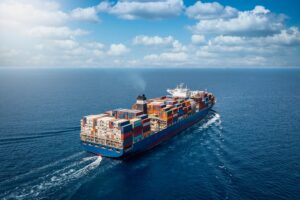Accruals in Visco are an estimated cost, usually applied to a Purchase Order, Container or Bill of Lading, that acts as a place holder for costs that will be applied once an invoice is received from a vendor. Something like a Storage Charge can be applied as a line item on a Purchase Order.
Or it can also be added to the container maintenance screen in a tab called ‘Estimated Costs’:
Something like a Duty Rate can be set as a percentage at the product level, so that every time an item with a duty rate is purchased, it calculates the duty that would be owed on top of material cost itself. The duty rate is calculated as a % of the value of the goods shipped (Purchase price per unit x qty shipped Duty rate).
The reason why this is incredibly helpful is because it allows you to see a better picture of what you will actually be making at the end of the entire transaction. Your Landed Projected Cost (LPC) of a good, is the projected total cost of the item once landed. If you don’t receive the charges until the transaction is over, you can use an accrual as a way to get an idea of what you will be expected to pay.
One customer we recently helped needed several accruals to be automatically calculated. They needed a Merchant Processing Fee and a Harbor Maintenance Fee that they needed to be a percentage of every purchase order. They wanted this accrual to show on their Venture Analysis (the Landed Cost Analysis report shown above) and their Gross Margin Detail, when the item was put into transit. Along with a duty rate, they also wanted to calculate the Tariff percentage.
In Visco, once you apply an actual cost it replaces the accrual in the calculation of your Latest Actual Cost.
Lastly, they wanted an automatic freight charge to be applied to every container, as it was a flat fee.
By having all of these items as automatically calculated accruals, they were able to have a better idea as to what their actual cost for every product would be, allowing them to set more accurate sales margins, leading to greater profit.










